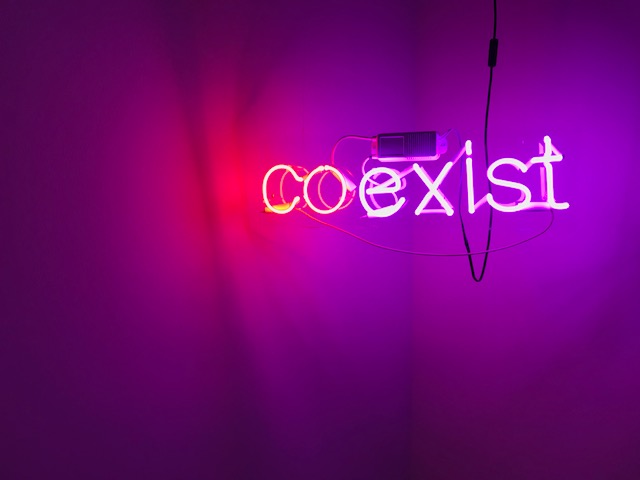
COEXIST (!)
One of the first things a visitor notices uponarriving in Istanbul is the presence of cats. These disrupt the stereotypical relationship of domestic companionship that is the norm between humans and cats in Western societies.
Beyond the vast, well documented informal infrastructures, from food to shelter, that the city (or citizens) provide for them, cats’ livelihoods in Istanbul are a powerful lesson. In a global landscape characterized by imbalance, loss, and the catastrophic consequences of human domination upon all sentient beings, they offer an alternative model for reshaping coexistence between species.
Through our project, we wanted to reflect on thesefeline ecosystems by engaging with the productive ecosystems and of the city. With the help of the Ugurlu Neon Shop in Shishane, we used one
Cats in Istanbul exist between worlds, reshaping the relationship between domestication, care, citizenship and wilderness. It is not a coincidence that one of Brussels’s requirements for Turkey
We must learn from Istanbul and devise new ways of coexistence, ways which resonate with Donna Haraway’s notions of making kin:
”No species, not even our own arrogant one pretending to be good individuals in so-called modern Western scripts, acts alone; assemblages of organic species and of abiotic actors make history, the evolutionary kind and the other kinds too.
[…]Making kin is perhaps the hardest and
most urgent part. […] I think that the stretch and recomposition of kin are allowed by the fact that all earthlings are kin in the deepest sense, and
it is past time to practice better care of kinds- as- assemblages (not species one at a time). Kin is an assembling sort of word. All critters share
a common “flesh,” laterally, semiotically, andgenealogically. Ancestors turn out to be very interesting strangers; kin are unfamiliar (outside what we thought was family or gens), uncanny, haunting, active. […]” ¹
So, make kin, not babies! It matters how kin generate kin.
to join the EU was to get rid of Istanbul’s cats. Indeed, these cat urban ecosystems resist European models based on domestication.
Free from human ownership but navigating between human affection, bonding and love,Istanbul’s feline ecosystem also defies thetraditional relationship between love and property that originated in Western capitalist societies. In a ritual of animal polyamory, cats roam freely around the city, seeking and giving warmth and cuddles from strangers that become kin, and creating new networks of love between them, humans, and the environment.
word – coexist! – to create a neon urban sign which materially interacts with the streets of Istanbul whilst addressing the viewer. We also produced
a project dossier, an assembly of references andprocess documentation giving context to the finalproduced piece.
¹Donna Haraway, ’Anthropocene, Capitalocene, Plantationocene, Chthulucene: Making Kin’, in EnvironmentalHumanities, vol. 6, 2015, pp. 159-165
Istanbul Design Biennale 2018
Carlota Mir
Emre Aydilek
Florence Taché
Gustav Karlsson
Sofia Larsson
Vesna Salamon
Research Lab Royal Institute of Art Stockholm
UGURLU NEON










